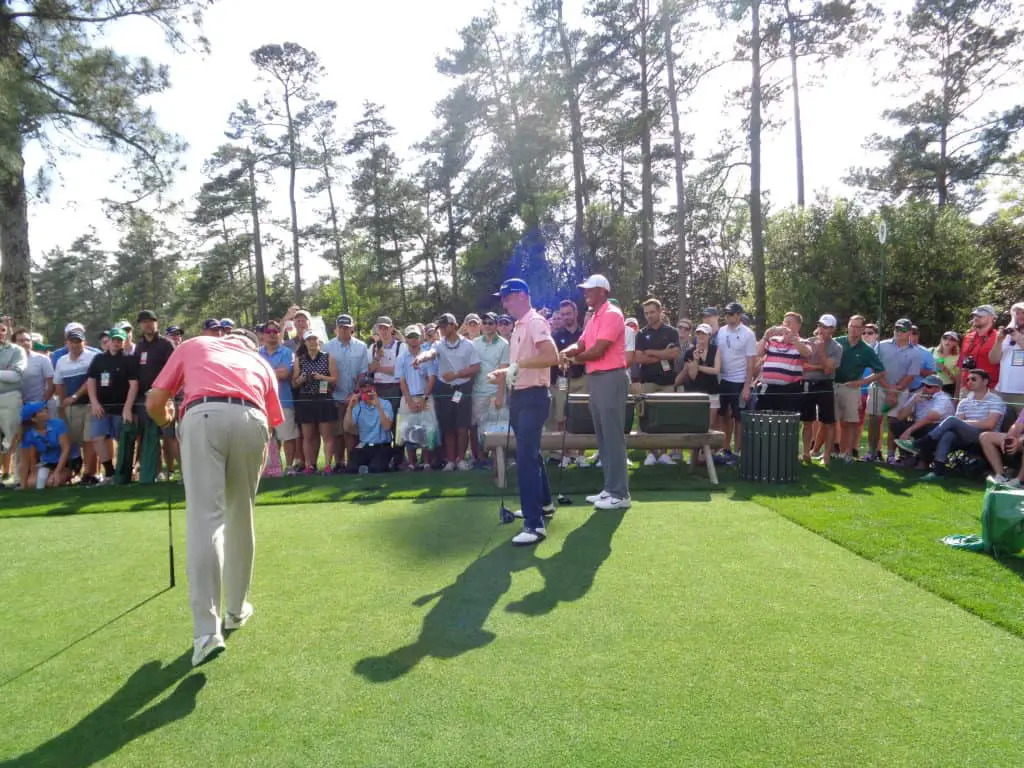I spent several years of my golf journey fighting the hook with my driver.
I would play some quality golf for 2-3 week stretches and then get into a stretch where I would hook the driver at the worst possible times.
Many attempts were taken to fix this issue and I share with you the top 3 reasons I was hooking my driver and what solutions worked to help eliminate the hook shot completely.
On occasion, I will still battle a slight overdraw, but the hook is all but gone!
Why Do I Hook My Driver?
The ball flight law answer is too large of a gap between a club face that is closed to the swing path. For example, a club face that is 1 degree open with a swing path that is 10 degrees out to in. The actual swing faults that produce this large gap are a poor setup, a stalling body, or “getting stuck.”
Let’s dive further into the ball flight laws to start.
Here are some basics.
If your club face is left of the swing path and the gap is too large, you are going to hook the golf ball.
Here are several examples:
- A clubface that is 1 degree closed to the target line with a swing path that is 8 degrees to the right. This large gap causes a shot that starts fairly straight and hooks hard left.
- A clubface that is 4 degrees open to the target line with a swing that that is 13 degrees to the right. This large gap causes a shot that starts right and hooks hard left.
- A club face that is 3 degrees closed to the target line with a swing path that is 6 degrees to the right. This large gap causes a shot that starts left and hooks hard left.
The common thread above is a large gap (8+ degrees) between where the clubface is aiming at impact and the swing path to get to that point.
Common Ball Flight Laws:
- The golf ball will start in the relative direction of where the clubface is aimed at impact.
- The golf ball will then curve away from the swing path.
- For example: If the club face is 2 degrees closed with a path that is 8 degrees across the ball, you will hit a pull slice. Another example: If your club face is 2 degrees open with a swing path that is 4 degrees to the right, you will hit a nice push draw.
Now that we have the basics of the ball flight laws that cause the hook and the science behind the hook, let’s dive into the actual swing faults that some of us fight from time to time. The more we understand about the ball flight laws and the common faults, the quicker we can fix an issue when it arises.

Swing Fault #1: Poor Setup
The parts of the setup that you should check if you are fighting a hook:
- Ensure your grip is not “too strong.”
- Ensure your body isn’t “too closed” at setup.
- Ensure you have proper ball positioning. If the ball is too far back you can catch the ball on the backside of the swing arc, forcing a swing that is more in to out or from the inside.
To hook the ball less there are some simple steps:
- Use a weaker grip (closes the club face less
- Hit with an open stance (straightens out your swing path)
- Proper ball positioning (straightens out your swing path)
These simple solutions help minimize the gap between the clubface (too closed) and your swing path (too far to the right) which causes a high percentage of the issues golfers face when fighting the hook.
Swing Fault #2: Stalling Body
When the body stalls in the downswing, the hands will often flip. If the swing path is coming from the inside and all of a sudden your hands flip, the end result is often a hook. Some elite golfers can play decent golf from this position when they are timing right with the hands. However, it isn’t a swing that holds up long term or under pressure. Eventually, when you are out of sync this movement will cause a hook.
This was the issue I fought the most. I would really be firing at the ball and the body would get ahead of the arms and I would time it right sometimes and hook the golf ball the other times.
To fight and correct this issue:
- Feel you are keeping a quieter body.
- Feel that you are firing the arms before the body (won’t happen in reality).
- Think of the arms beating the logo of your shirt to the golf ball.
- Have a feel that the arms and body are moving together (won’t happen in reality).
We all know that the lower body fires first and leads a sequence in the swing that has the arms firing after the body. When there is a slight delay, of very small portions of a second, you are fine. When the gap between the two even grows slightly, the stalling can occur, leading to flipping hands, resulting in a hook with the driver.
Here is the best video I can remember highlighting a slight stall or too far inside:
Swing Fault #3: Getting Stuck
This is very similar to the stalling body, but in some cases the body doesn’t stall and the golfer is simply out of position when the body has already cleared. The video above with Tiger is more about getting stuck then maybe a stalling body. They feel the same as the hands become active and the golfer has to rely on the flipping and timing to hit a quality shot.
Why does this happen?:
- This type of swing from the inside can produce quality speed.
- Athletic golfers can get away with it a high percentage of the time.
Many junior golfers grow up swinging with an active lower body, detached from the arms and slinging the ball down the fairways. They play the over draw or hook and get some awesome distance and can control it a decent percent of the time.
They then seek consistency and realize that they are depending on timing and try to change their swing to make it more neutral, leading to potential greater consistency.
All golfers want to be more consistent and not have to fear their swing. They are on a constant journey to get better.
Potential Drills You Can Use:
- Freezer Drill: freeze at the top of the swing before swinging down.
- Pump Drill: Swing to the top, move the arms down several times to feel the arms beating the body.
- Connection Drill: Feel a connection between body and arms.
If you are battling this, you can also check out the George Ganksas approach which has a wide open lower body at impact, but the arms are more connected. It is worth checking out!

Driver Related Posts:
- How to hit your driver longer and straighter
- Why am I pushing my driver to the right
- What is the best swing path for a driver?
My Secret To Golf Improvement
Let’s face it, in order to get really good at golf, we must practice frequently. About give years ago, I made the leap and invested in a golf simulator build for my garage. I went with a SkyTrak Launch Monitor and the TGC software and can now play over 100,000 courses including Augusta, Pebble Beach, Bethpage Black, Whistling Straits. St. Andrews and many other of the top 100 courses in the world.
This golf simulator setup, which is more affordable that you might imagine, has been a game changer. I can now play golf everyday of the year regardless of rain, snow, cold weather or time of day. I can practice or play rounds of golf. I can stand in the 11th fairway at Augusta and with the auto-rewind feature I am able to practice my approach shots from various differences.
It is worth checking out through Rain or Shine Golf as they offer some incredible packages along with financing offers that are difficult to beat.
Some direct links to Rain or Shine Golf for pricing and financing:
